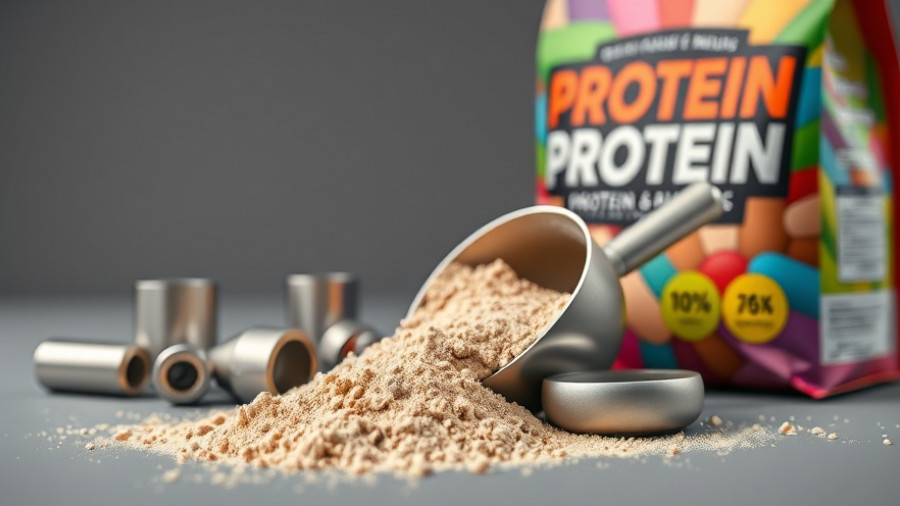
Unveiling a Hidden Danger: Lead in Pea Protein
In recent years, consumers have increasingly focused on nutritional supplements, particularly protein powders and shakes. However, a disconcerting trend has emerged as studies reveal potentially dangerous levels of lead linked to one common ingredient: pea protein. Reports from Consumer Reports highlight that over two-thirds of protein powders evaluated contained lead levels exceeding those deemed safe for daily consumption. Given the risks associated with lead exposure, this situation raises alarm bells for both human and pet food safety.
Pea Protein: Common Ingredient, Common Risk
Pea protein, often celebrated as a high-quality plant protein, is now under scrutiny for its connection to heavy metal contamination. The recent investigations uncovered that despite the nutritional benefits of pea protein, its production process may expose it to lead, a toxic heavy metal. As highlighted in the findings from Consumer Reports, the extraction methods and sourcing can lead to heavy metal exposure that is not just confined to human consumption but extends to pet foods as well.
Comparing Human Supplements and Pet Foods: A Risky Similarity
While consumers are vigilant about what they consume in the form of protein shakes, it is critical to apply the same caution when it comes to feeding our beloved pets. Many brands of pet food utilize feed-grade ingredients that do not undergo the same rigorous testing as food-grade ingredients for humans. This discrepancy raises concerns about the potential risks associated with feeding pets products that might also contain the harmful lead levels highlighted in the Consumer Reports findings. A notable case involved a popular dog food brand that had elevated lead levels—so significant that they compared unfavorably to the levels found in contaminated water sources.
The Regulatory Void: Why Oversight is Lacking
One of the main issues surrounding lead contamination in protein powders and pet food ingredients is the lack of federal regulations. While the FDA regulates food products, it does not impose limits on heavy metals in dietary supplements and pet foods. There are currently no maximum levels of lead established for these categories, leaving consumers at risk. As Dr. Pieter Cohen from Harvard Medical School points out, without clear guidelines and regular testing, manufacturers may not prioritize safety, allowing potentially harmful products to reach consumers' shelves.
Making Informed Choices: Tips for Consumers and Pet Owners
For individuals concerned about lead exposure from protein powders or pet foods, there are several practical steps to consider:
- Research Brands: Investigate protein supplements and pet food brands that are transparent about their ingredient sourcing and heavy metal testing.
- Limit Consumption: Try to limit protein powder usage to prevent excessive lead exposure. Instead, focus on whole food sources of protein.
- Contact Manufacturers: Don’t hesitate to reach out—ask whether products are tested for lead contamination.
- Stay Informed: Keep up with studies and reports on protein supplements and the potential risks associated with their ingredients.
Future Considerations and Trends in Nutritional Safety
As awareness about heavy metals in food products rises, it’s likely that both consumers and regulators will demand more stringent testing and labeling. The health implications of prolonged lead exposure, particularly for vulnerable populations such as children and pets, emphasize the urgency in addressing this issue. As we become more informed about the implications of our dietary choices, shifting back to whole foods could be the key to maintaining both our health and the health of our furry companions.
In conclusion, whether you are an avid gym-goer guzzling protein shakes or a pet owner selecting food for your furry friend, it is crucial to be consciously aware of the ingredients in these products. By prioritizing safety and nutritional value, we can help ensure healthier choices for our families and pets alike.
 Add Row
Add Row  Add
Add 


Write A Comment